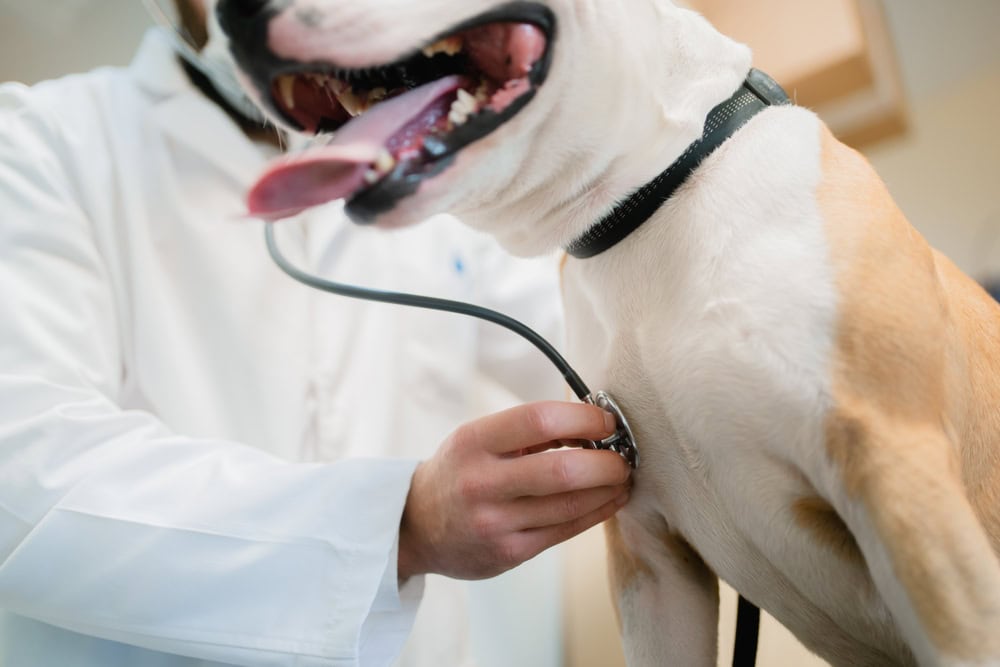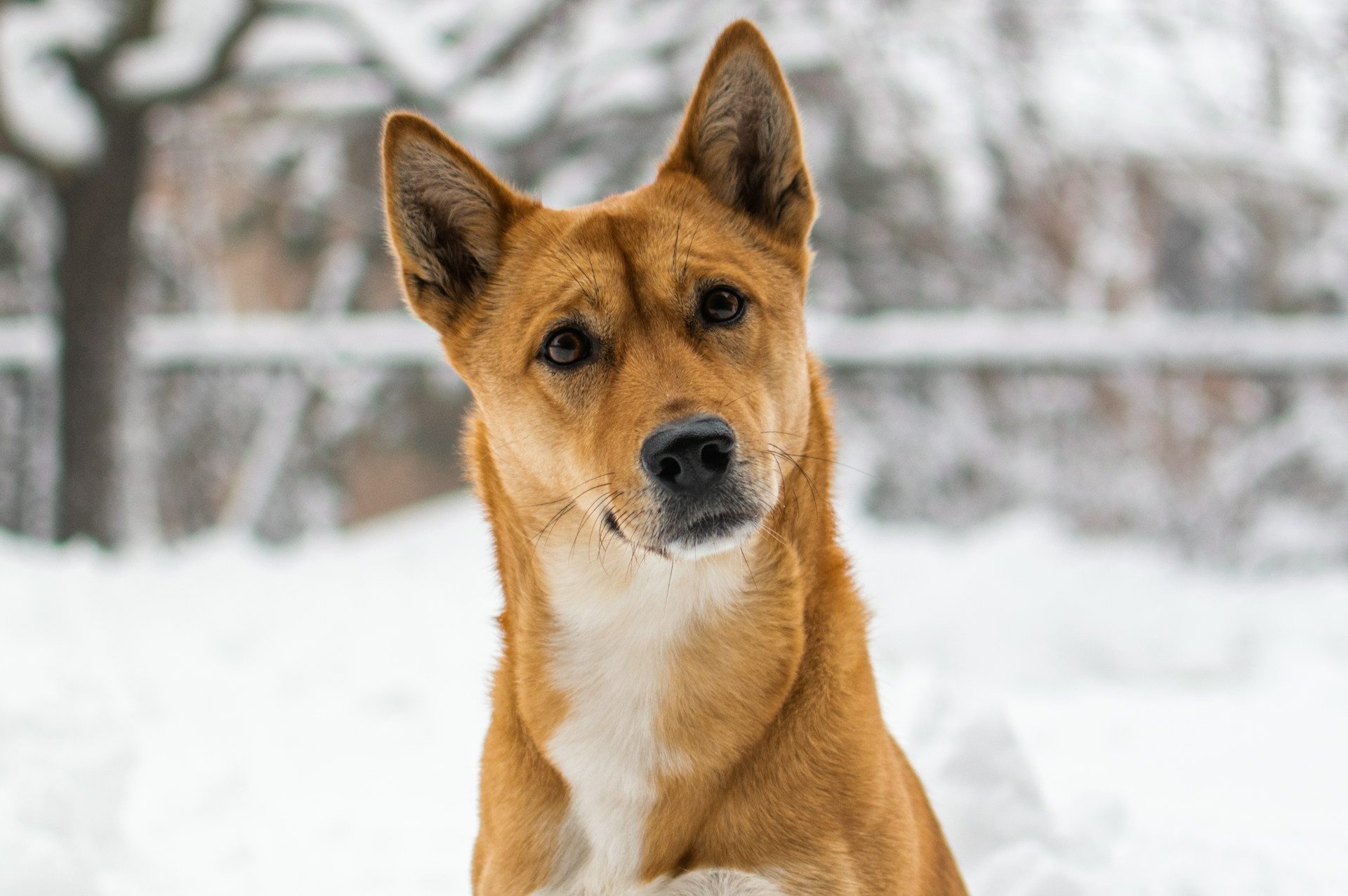
The information is current and up-to-date in accordance with the latest veterinarian research.
Learn more »
A dog with tracheal collapse has a distinctive goose-honking cough, but there’s definitely more to tracheal collapse than just a noise. It’s a progressive condition that literally takes the wind out of affected dogs and requires life-long management.
Let’s take a deep dive into tracheal collapse so you can better understand how to help your honking pup breathe easier.
What Is Tracheal Collapse in Dogs?
The trachea is the windpipe that enables air to move from the mouth down into the lungs. The rigid structure gets its shape from C-shaped cartilaginous rings stacked on top of each other. Each ring is an incomplete circle, with a thin membrane of tissue connecting and completing it. The rigidity of the trachea is crucial because that is what keeps it open so air can move in and out freely.
In a dog with tracheal collapse, the cartilage rings degenerate or weaken over time, causing them to flatten and that membrane of tissue to be sucked into the middle of the trachea when the dog breathes in. Then, when they try to inhale air into the lungs, the windpipe sucks in on itself, making it hard for air to pass through. It’s similar to trying to drink water through a crushed straw; it takes a great deal of effort without much reward.
Whenever an affected dog tries to breathe in through this reduced area, it can lead to a dry, honking cough and other signs.
Image Credit: GoodFocused, Shutterstock
What Are the Signs of Tracheal Collapse in Dogs?
The signature cough of a collapsed trachea tends to get worse at night, with exercise or excitement, when it’s hot or humid, after eating and drinking, and when the dog is pulling on their collar.
Other signs of tracheal collapse in canines include:
Retching, gagging
Wheezing
Exercise intolerance
Difficulty breathing
Bluish gums or tongue
Collapse
These signs are seen more in severely affected dogs. Tracheal collapse is a progressive disease, so it gets worse over time, as those cartilage rings get weaker and weaker.
What Causes Tracheal Collapse in Dogs?
What leads to the degeneration of the cartilage rings in the first place is a bit of a mystery. Since tracheal collapse typically plagues small breeds, it’s thought that there’s a genetic component. For example, Yorkies, Shih Tzus, Pomeranians, Chihuahuas, and toy Poodles are the most commonly affected. But tracheal collapse can also occur in medium to large breeds.
Other possible causes could be injury, exposure to irritants like chemicals or smoke, upper respiratory infections, and undergoing anesthesia with intubation. It tends to be worse in dogs that are overweight or obese and dogs with heart enlargement due to heart disease.
Since tracheal collapse is a degenerative disease, it’s also more often seen in middle-aged to senior pups.
Image Credit: Brenda Areli55, Shutterstock
How Do I Care for a Dog With Tracheal Collapse?
If your pup has developed a persistent cough, it’s time to see your veterinarian. Do so immediately if your dog is experiencing any kind of respiratory distress, such as difficulty breathing, wheezing, and of course, collapse.
Your vet will likely be able to diagnose a collapsing trachea after hearing the cough, listening to their heart and lungs, and gently manipulating their trachea. However, they may also want to run bloodwork and take X-rays. In certain cases, more advanced imaging may be necessary in order to rule out other causes of coughing, such as heart disease.
They can then look into treatment, which often consists of a combination of medical therapies and lifestyle changes. Some pups respond well to anti-inflammatories, cough suppressants, or bronchodilators. All of these work to decrease inflammation and open the airways to help the dog pull more air into their lungs.
Since tracheal collapse becomes more of an issue when a dog is excited or stressed, reducing these incidences can help them breathe more easily. You may have to implement specific training and behavior modifications to help your dog respond to stimuli in a more low-key fashion, including giving them a safe space when overwhelmed and focusing on desensitization to stressors.
You’ll also want to reduce irritants like cigarette smoke from your dog’s environment, switch to a harness for walks, avoid exercising in the heat and humidity, and put your dog on a weight loss plan if needed.
However, even with all these treatment measures in place, some pups will still have problems and may experience respiratory emergencies regularly. For them, surgery may be the best option. Tracheal surgery will require a referral to a specialist, who will implant a stent into the trachea to help keep it open. Of course, surgery isn’t a risk-free option, so you’ll want to discuss it in detail with your veterinarian.
Frequently Asked Questions (FAQ)
How Long Can a Dog Live With a Collapsing Trachea?
Fortunately, with proper management, most pups can live normal, long lives, but owners will need to be diligent and provide continued management. Keep in mind that even with treatment, affected dogs will often still have a bit of a cough, but they should at least be able to take in the air that they need.
Severely affected dogs may be a different story, especially without treatment. Those that have frequent respiratory emergencies are going to have a poorer quality of life.
Is Tracheal Collapse in Dogs Painful?
Continued coughing due to tracheal collapse leads to inflammation, which can be painful, especially if severe. Also, blockage of the trachea during severe episodes may cause pain for the dog.
How Long Does Tracheal Collapse Last?
Tracheal collapse is a life-long issue. It typically develops in middle-aged pups and gets worse over time. With proper treatment, the signs can be reduced, but the condition can’t be cured. Surgery can be a more permanent fix but often has to be combined with medical treatments for the best results. In other words, tracheal collapse in your dog won’t go away, but it can be managed.
Conclusion
Tracheal collapse is an issue where the rigidity of the trachea weakens over time, making it difficult for affected dogs to bring air into their lungs. It is most often seen in small breeds and shows up with a dry, honking cough, especially when the dog is excited or stressed. Since it worsens over time, it’s best to start treatment as soon as possible to ensure that your pup has the air that they need to live an active, healthy life.
Featured Image Credit: StrDr stock, Shutterstock






